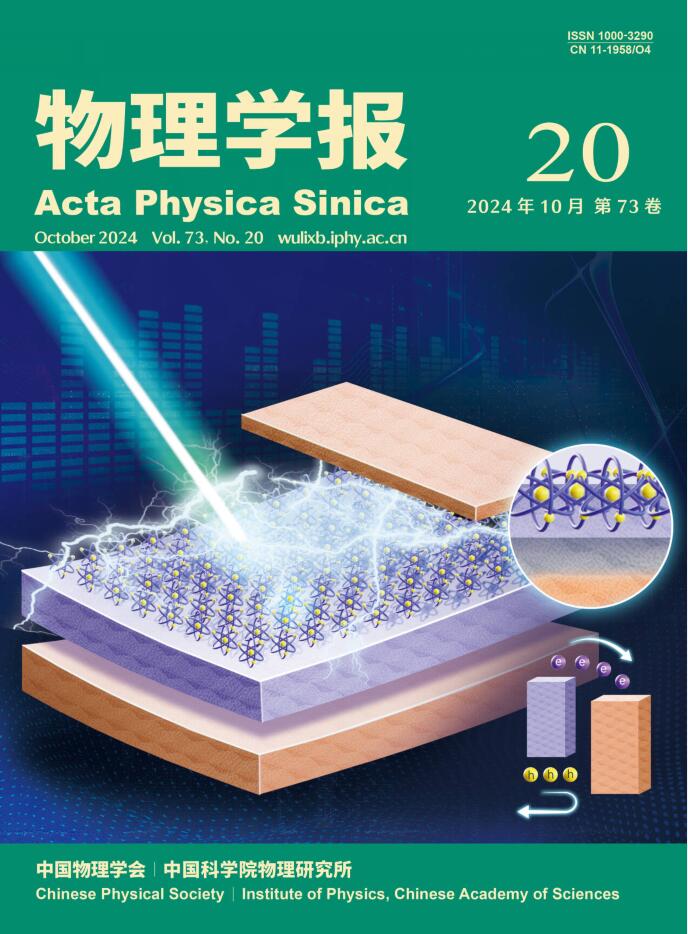不同气氛下硫化镉/铜基薄膜异质结退火对太阳能电池性能调节的研究
IF 0.8
4区 物理与天体物理
Q3 PHYSICS, MULTIDISCIPLINARY
引用次数: 0
摘要
高效的铜基薄膜太阳能电池通常采用无机n型半导体材料CdS作为缓冲层。因此,缓冲层和吸收层之间的界面质量和能带匹配对载流子的收集和利用至关重要。热处理可以促进界面元素的相互扩散、离子在材料中的迁移和缺陷状态的变化,适当的温度会改变吸收层中Cu-Zn的有序程度,从而提高太阳能电池的效率。在优化CdS基本工艺的基础上,采用硫气氛退火CdS/铜基薄膜异质结的策略进一步提高了CdS薄膜的质量,并将其应用于铜基太阳能电池中,以调节铜基薄膜电池的p-n异质结能带隙匹配。结果表明:在含硫惰性气氛中对CdS薄膜进行退火处理,可以有效改善CdS薄膜的晶体质量,抑制CZTS/CdS异质结界面缺陷俘获引起的非辐射复合损耗,器件的开路电压可显著提高,最高可达718 mV。此外,在S/Ar气氛中退火CZTS/CdS异质结可以有效改善p-n异质结能带隙匹配,不仅提高了电子的透射率,还减少了载流子的复合,从而提高了器件的Voc和FF。此外,在硫气氛中,可以用硫元素代替CdS膜中的氧元素,提高CdS膜的质量,从而增强太阳能电池器件的短波吸收。因此,在器件效率方面,基于溅射方法的CZTS太阳电池的效率从3.47%提高到5.68%,约为非退火处理的2倍,其器件结构为Glass/Mo/CZTS/CdS/i-ZnO/Al:ZnO/Ni/Al,为铜基薄膜太阳电池器件实现高开路电压提供了可靠的工艺窗口。同时,本研究也有力地证明了退火气氛的选择对CdS质量和CZTS/CdS异质结能带匹配的重要性。除了界面相互扩散外,薄膜材料的组成和结晶度也受到控制。本文章由计算机程序翻译,如有差异,请以英文原文为准。
Study on the regulation of solar cell performance by cadmium sulfide/copper-based thin film heterojunction annealing under different atmospheres
Efficient copper based thin film solar cells usually use inorganic n-type semiconductor material CdS as the buffer layer. Therefore, the interface quality and energy band matching between the buffer layer and the absorption layer are crucial to the collection and utilization of carriers. Heat treatment can promote the mutual diffusion of interface elements, the migration of ions in the material and the change of defect state, and the proper temperature will change the degree of Cu-Zn ordering in the absorption layer, so as to improve the efficiency of the solar cells. Based on the optimization of CdS basic process, the strategy of annealing CdS/copper-based thin film heterojunction in sulfur atmosphere further improves the quality of CdS thin film, and applies it to copper-based solar cells to regulate the p-n heterojunction energy band gap matching of copper-based thin film cells. The results show that the annealing of CdS film in sulfur-containing inert atmosphere can effectively improve the crystal quality of CdS film and inhibit the non-radiative recombination loss caused by defect trapping at the interface of CZTS/CdS heterojunction, and the open-circuit voltage of the device can be significantly increased, up to 718 mV. In addition, annealing CZTS/CdS heterojunction in S/Ar atmosphere can effectively improve the p-n heterojunction energy band gap matching, which not only improves the electron transmission, but also reduces the carrier recombination, thus improving the Voc and FF of devices. Besides, the oxygen element in CdS film can be replaced by sulfur element in sulfur atmosphere to improve the quality of CdS film and thus enhance the short-wave absorption of solar cell devices. Therefore, In terms of device efficiency, the efficiency of CZTS solar cell based on sputtering method has increased from 3.47% to 5.68%, which is about twice that of non-annealing treatment, Its device structure is Glass/Mo/CZTS/CdS/i-ZnO/Al:ZnO/Ni/Al, providing a reliable process window for copper based thin film solar cell devices to achieve high open-circuit voltage. Meanwhile, this study strongly demonstrates the importance of annealing atmosphere selection for CdS quality and energy band matching of CZTS/CdS heterojunction. In addition to interface interdiffusion, the composition and crystallinity of thin film materials are controlled.
求助全文
通过发布文献求助,成功后即可免费获取论文全文。
去求助
来源期刊

物理学报
物理-物理:综合
CiteScore
1.70
自引率
30.00%
发文量
31245
审稿时长
1.9 months
期刊介绍:
Acta Physica Sinica (Acta Phys. Sin.) is supervised by Chinese Academy of Sciences and sponsored by Chinese Physical Society and Institute of Physics, Chinese Academy of Sciences. Published by Chinese Physical Society and launched in 1933, it is a semimonthly journal with about 40 articles per issue.
It publishes original and top quality research papers, rapid communications and reviews in all branches of physics in Chinese. Acta Phys. Sin. enjoys high reputation among Chinese physics journals and plays a key role in bridging China and rest of the world in physics research. Specific areas of interest include: Condensed matter and materials physics; Atomic, molecular, and optical physics; Statistical, nonlinear, and soft matter physics; Plasma physics; Interdisciplinary physics.
 求助内容:
求助内容: 应助结果提醒方式:
应助结果提醒方式:


